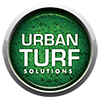The Pros and Cons of Artificial Grass vs Natural Grass
Artificial grass and natural grass are two options for lawns and landscaping that have their own advantages and disadvantages. Here are some pros and cons to consider when deciding between the two:
Pros of artificial grass:
Low maintenance: Unlike natural grass, artificial grass does not require watering, mowing, or fertilising.
Durability: Artificial grass is resistant to wear and tear, making it ideal for high-traffic areas.
Consistent appearance: Artificial grass maintains a uniform appearance all year round, regardless of weather conditions or foot traffic.
Environmentally friendly: Artificial grass does not require watering, which conserves water resources.

Cons of artificial grass
Upfront cost: Artificial grass can be expensive to install, with costs ranging from several hundred to several thousand dollars.
Not biodegradable: Once it has reached the end of its lifespan, artificial grass is not biodegradable and can take up space in landfills.
Heat retention: Artificial grass can retain heat, making it uncomfortable to walk on during hot weather.
Limited biodiversity: Artificial grass does not provide the same habitat and food sources for wildlife that natural grass does.
Pros of natural grass
Aesthetics: Natural grass provides a lush, green appearance that many people find attractive.
Good for the environment: Natural grass helps to filter pollutants and dust from the air and water, and provides a habitat for insects, birds, and small mammals.
Cooler surface: Natural grass stays cooler than artificial grass, making it more comfortable to walk on during hot weather.
Lower upfront cost: The cost of installing natural grass is typically much lower than that of artificial grass.
Cons of natural grass
High maintenance: Natural grass requires regular watering, mowing, and fertilising to maintain its appearance.
Vulnerability to weather conditions: Natural grass can be damaged by extreme weather conditions such as drought or heavy rainfall.
Limited durability: Natural grass can be quickly worn down by foot traffic, making it unsuitable for high-traffic areas.
Pesticides: Maintaining natural grass may require the use of pesticides, which can be harmful to the environment and human health.
Factors to Consider When Choosing Between Artificial Grass and Natural Grass
When deciding between artificial grass and natural grass, it’s important to consider a number of factors, including:
Upfront cost: Artificial grass is generally more expensive to install than natural grass, but it requires little to no maintenance over time, which can save money in the long run.
Long-term cost: While natural grass may be less expensive to install, it requires regular maintenance, which can add up over time.
Climate: The climate in your area can impact which option is best. Artificial grass can be a good choice in hot, dry areas where natural grass may struggle to thrive, while natural grass may be a better option in cooler, wetter climates.
Purpose: The intended use of your lawn or landscaping can also impact which option is best. If you have children or pets who will be using the area frequently, artificial grass may be a better choice due to its durability.
Environmental impact: Both artificial grass and natural grass have their own environmental impact to consider. Artificial grass requires no watering, which conserves water resources, but it is not biodegradable. Natural grass provides habitat and food for wildlife, but it requires regular watering and may require the use of pesticides.
Section 3: Maintaining Your Artificial or Natural Grass Lawn
Whether you choose artificial grass or natural grass, proper maintenance is essential for keeping your lawn in good condition.
Here are some tips for maintaining your lawn:
Cons of Artificial Grass
While there are many benefits to installing artificial grass, there are also some cons to consider before making a decision:
Higher upfront cost: While artificial grass may save money in the long run, it often has a higher upfront cost than natural grass.
Heat retention: Artificial grass can retain more heat than natural grass, making it hotter to the touch and uncomfortable to play on during hot weather.
Environmental impact: While some types of artificial grass are made from recycled materials, many are not environmentally friendly and can contribute to pollution during manufacturing and disposal.
Maintenance: While artificial grass requires less maintenance overall, it still requires regular cleaning and upkeep to prevent mold and mildew growth.
Limited biodiversity: Artificial grass does not provide the same habitat and food sources for insects and animals that natural grass does, contributing to a decline in biodiversity.
Cons of Natural Grass
While natural grass is a popular choice for many homeowners, there are also some cons to consider:
High maintenance: Natural grass requires regular mowing, watering, fertilizing, and weed control to keep it looking healthy and lush.
Water usage: Keeping natural grass healthy requires a lot of water, which can be a concern in areas with water shortages or high water bills.
Pesticides and chemicals: Many homeowners use pesticides and other chemicals to keep their natural grass looking healthy, which can be harmful to the environment and to people and pets who come into contact with the chemicals.
Soil erosion: Natural grass can be prone to soil erosion, especially in areas with steep slopes or heavy rainfall.
Seasonal changes: Natural grass can become brown and dormant during dry or cold seasons, requiring more maintenance and care to keep it looking healthy year-round.
Both artificial and natural grass have their pros and cons, and the decision ultimately comes down to the specific needs and preferences of the homeowner.
